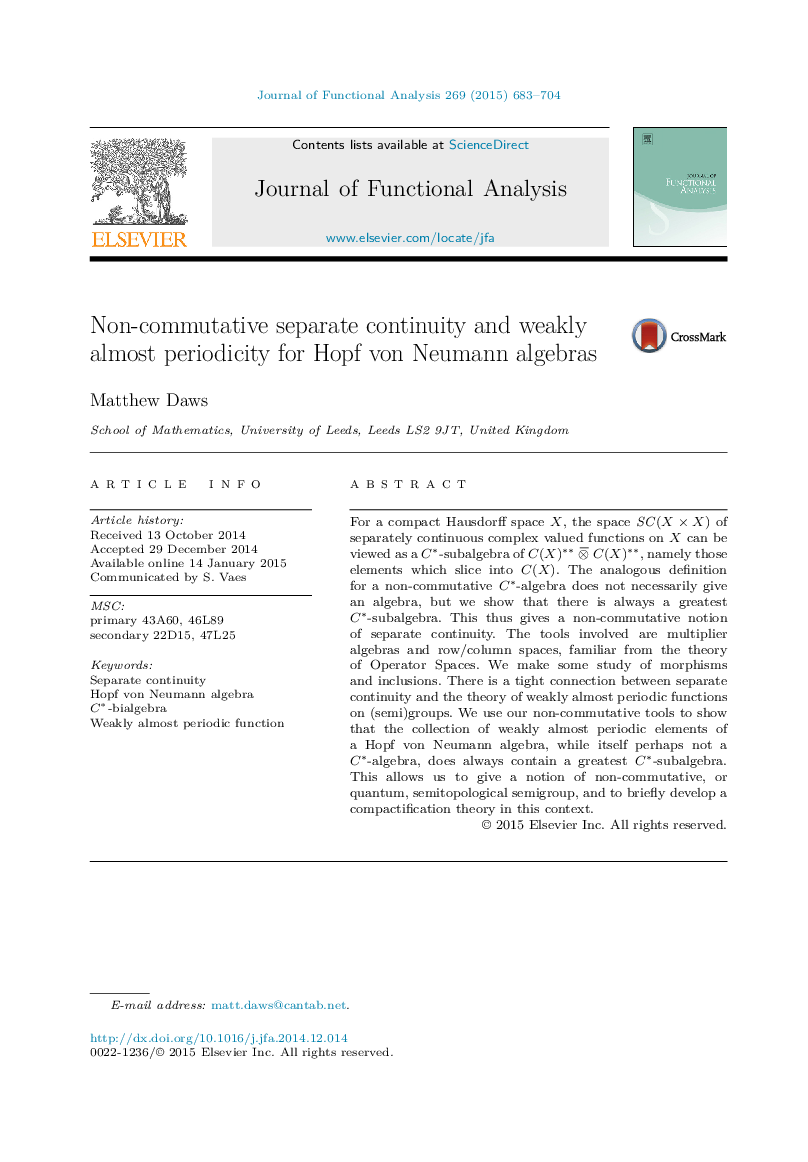| کد مقاله | کد نشریه | سال انتشار | مقاله انگلیسی | نسخه تمام متن |
|---|---|---|---|---|
| 4589800 | 1334909 | 2015 | 22 صفحه PDF | دانلود رایگان |
For a compact Hausdorff space X , the space SC(X×X)SC(X×X) of separately continuous complex valued functions on X can be viewed as a C⁎C⁎-subalgebra of C(X)⁎⁎⊗¯C(X)⁎⁎, namely those elements which slice into C(X)C(X). The analogous definition for a non-commutative C⁎C⁎-algebra does not necessarily give an algebra, but we show that there is always a greatest C⁎C⁎-subalgebra. This thus gives a non-commutative notion of separate continuity. The tools involved are multiplier algebras and row/column spaces, familiar from the theory of Operator Spaces. We make some study of morphisms and inclusions. There is a tight connection between separate continuity and the theory of weakly almost periodic functions on (semi)groups. We use our non-commutative tools to show that the collection of weakly almost periodic elements of a Hopf von Neumann algebra, while itself perhaps not a C⁎C⁎-algebra, does always contain a greatest C⁎C⁎-subalgebra. This allows us to give a notion of non-commutative, or quantum, semitopological semigroup, and to briefly develop a compactification theory in this context.
Journal: Journal of Functional Analysis - Volume 269, Issue 3, 1 August 2015, Pages 683–704
